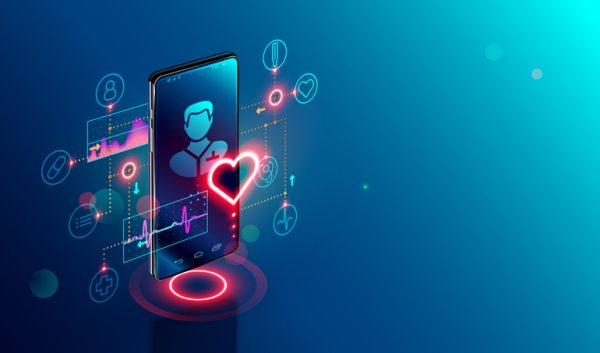
Covid-19 has tragically cost the lives of thousands of Americans. But amid our national despair over the pandemic’s bitter toll comes an important revelation. The abrupt end to most in-person medical encounters has revealed the value of digital health – technology that has acted as a brake on the pandemic’s damage by supplying remote access to providers and promising a future in which it is convenient at last for people to stay healthy.
That hope was almost certainly top of mind for digital health leaders at Teladoc and Livongo, who this month announced an $18.5 billion merger. Combining the companies’ telemedicine and remote patient monitoring capabilities will likely make it easier for users of both companies’ solutions to get and stay healthy. More broadly, though, the merger is the latest signal that the pandemic has dramatically accelerated a long-simmering trend. Consumer convenience—historically, the driver of innovation in every market from finance to travel—has suddenly become the leading driver of change in American healthcare.
Examples of this transformation are everywhere you look, from national pharmacy chains and retail giants like Walmart opening ever more in-store health clinics to Amazon launching “neighborhood health centers” providing primary care services for its employees. Government has proven a significant enabler of the trend, most recently via the interoperability and information blocking rules from CMS that give consumers, for the first time, digital access to their health information through an application or device of their choice. Multi-stakeholder industry groups like the CARIN Alliance, where I am a board member, have helped to push for the rules requiring stakeholders to provide access to a consumer’s medical records via FHIR-based APIs.
Digital’s Rise Risks Further Fragmentation
The rules set the foundation for a radically new technology-enabled consumer-first health care ecosystem and enable a lot of new business models focused on outcomes. That’s great news for consumers and providers alike. Ironically, though, the rise of digital in the health care ecosystem is also making the consumer experience increasingly fragmented and overly complex.
There are currently nearly half a million health-related apps, creating a disjointed and confusing experience for consumers and an impossibly vast selection of options for health systems. Moreover, as health care moves to consumers’ homes and phones, many are losing their relationship with a physician who can act as the quarterback for their care journey.
That’s a scary proposition for health systems that run on margins of 2 or 3 percent. Their business models require a strong patient-physician relationship to ensure the most profitable procedures get performed in the system’s own hospitals. Most providers are on board with healthcare consumerism but unsure how to get there without going broke. They know that if they resist the journey, non-traditional and more consumer-savvy providers like Amazon and Walmart may win their patients’ loyalty. And once consumers switch modes to a new way of accessing care, traditional providers tend to lose control of the primary care experience and become reliant on the new merchants of healthcare consumerism.

The Power of One: Redefining Healthcare with an AI-Driven Unified Platform
In a landscape where complexity has long been the norm, the power of one lies not just in unification, but in intelligence and automation.
So how can we continue to adopt a consumer-first digital experience without further fragmenting care and possibly bankrupting many of the nation’s health systems? You might say the answer requires trust.
It requires loosening the reins and handing control of the health care journey over to consumers. It requires a radically new kind of digital front door for the health system—one that does more than help patients navigate to the right provider, view their lab results or schedule an appointment online. The new digital front door must be an easy-to-use platform that aggregates and simplifies access to all of a consumer’s information, from every provider they see across a community, to every wearable they use to track their health. It must personalize the care experience by providing access to the resources consumers need, when they need them, including sending reminders fine-tuned by their engagement behaviors and preferences. It must seamlessly offer a combination of digital, virtual, and in-person care and empower patients to close their own gaps in care.
Importantly, it must also be available to everyone in a community, enabling patients to determine where, when and with whom they want to seek care. That may sound counterintuitive when the goal is to attract more patients. But I believe if you trust patients enough to give them a door opening on the entire healthcare world, they’re more likely to open that door to you.
Picture: Andrey Suslov, Getty Images
Kristen Valdes is the founder and CEO of b.well. Kristen is a transformative force in today’s healthcare marketplace, spearheading the conversation on how empowering consumers can transform healthcare delivery. She is a seasoned healthcare executive with over 20 years in the industry and has dedicated her life to pioneering inventive solutions. This quest has been largely driven by her powerful personal story as the mother of a child suffering from a significant autoimmune disorder.
Prior to founding b.well, Kristen was a Vice President at United Healthcare running Medicare Advantage plans across 12 states.
Mrs. Valdes has been recognized as a 40 Under 40 Healthcare Innovator and b.well Connected Health has won various competitions and awards including being named Top Innovator by Accenture in their Global Health Tech Innovation Challenge.
This post appears through the MedCity Influencers program. Anyone can publish their perspective on business and innovation in healthcare on MedCity News through MedCity Influencers. Click here to find out how.








